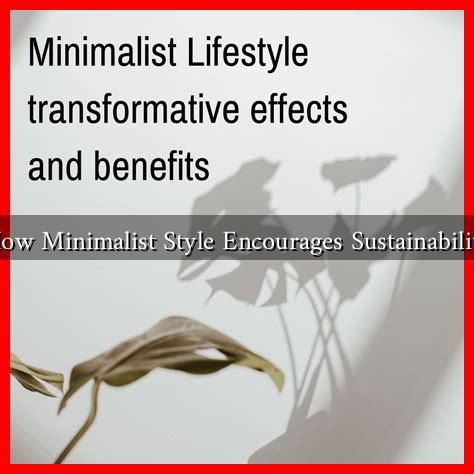-
Table of Contents
How Minimalist Style Encourages Sustainability
In recent years, the minimalist lifestyle has gained significant traction, not just as a design aesthetic but as a philosophy that promotes sustainability. Minimalism encourages individuals to simplify their lives by reducing excess and focusing on what truly matters. This article explores how adopting a minimalist style can lead to more sustainable living practices, benefiting both individuals and the planet.
The Essence of Minimalism
Minimalism is characterized by the intentional reduction of clutter and distractions, allowing individuals to focus on quality over quantity. This philosophy extends beyond aesthetics; it encompasses lifestyle choices, consumption habits, and environmental impact. By embracing minimalism, individuals can make conscious decisions that contribute to sustainability.
Reducing Consumption
One of the core tenets of minimalism is the reduction of consumption. By purchasing fewer items, individuals can significantly decrease their environmental footprint. Here are some ways minimalism encourages reduced consumption:
- Quality over Quantity: Minimalists often prioritize high-quality, durable products that last longer, reducing the need for frequent replacements.
- Mindful Purchasing: Minimalists tend to be more intentional about their purchases, asking themselves if an item is truly necessary before buying.
- Second-Hand Shopping: Many minimalists embrace thrift shopping and upcycling, which not only saves money but also reduces waste.
According to a study by the Statista, the average lifespan of consumer products is decreasing, leading to increased waste. By adopting a minimalist approach, individuals can counteract this trend by investing in long-lasting items.
Encouraging Sustainable Practices
Minimalism naturally aligns with sustainable practices, as it encourages individuals to be more mindful of their choices. Here are some sustainable practices that are often adopted by minimalists:
- Reducing Waste: Minimalists often focus on reducing waste by avoiding single-use items and opting for reusable alternatives.
- Energy Efficiency: A minimalist lifestyle often includes living in smaller spaces, which typically require less energy for heating and cooling.
- Mindful Eating: Many minimalists adopt a plant-based diet, which has a lower environmental impact compared to meat-heavy diets.
For instance, a case study conducted by the United Nations found that sustainable consumption patterns can significantly reduce greenhouse gas emissions. By embracing minimalism, individuals can contribute to these global efforts.
Creating a Sustainable Home Environment
Minimalism also extends to home design and organization. A minimalist home is often characterized by open spaces, natural light, and a lack of clutter. This not only creates a calming environment but also promotes sustainability through:
- Natural Materials: Minimalist design often incorporates sustainable materials such as bamboo, reclaimed wood, and recycled metals.
- Smart Design: Minimalist homes often feature energy-efficient appliances and smart home technology that reduces energy consumption.
- Indoor Plants: Incorporating plants into minimalist spaces can improve air quality and promote a connection to nature.
According to the Green Building Advisor, minimalist design principles can lead to more sustainable building practices, reducing the overall environmental impact of construction.
Conclusion
In conclusion, the minimalist style is more than just a trend; it is a powerful philosophy that encourages sustainability. By reducing consumption, adopting sustainable practices, and creating eco-friendly living spaces, minimalism offers a pathway to a more sustainable future. As individuals embrace this lifestyle, they not only enhance their own well-being but also contribute to the health of the planet. The key takeaway is that simplicity can lead to significant positive changes, both personally and environmentally. By choosing minimalism, we can all play a part in fostering a more sustainable world.

